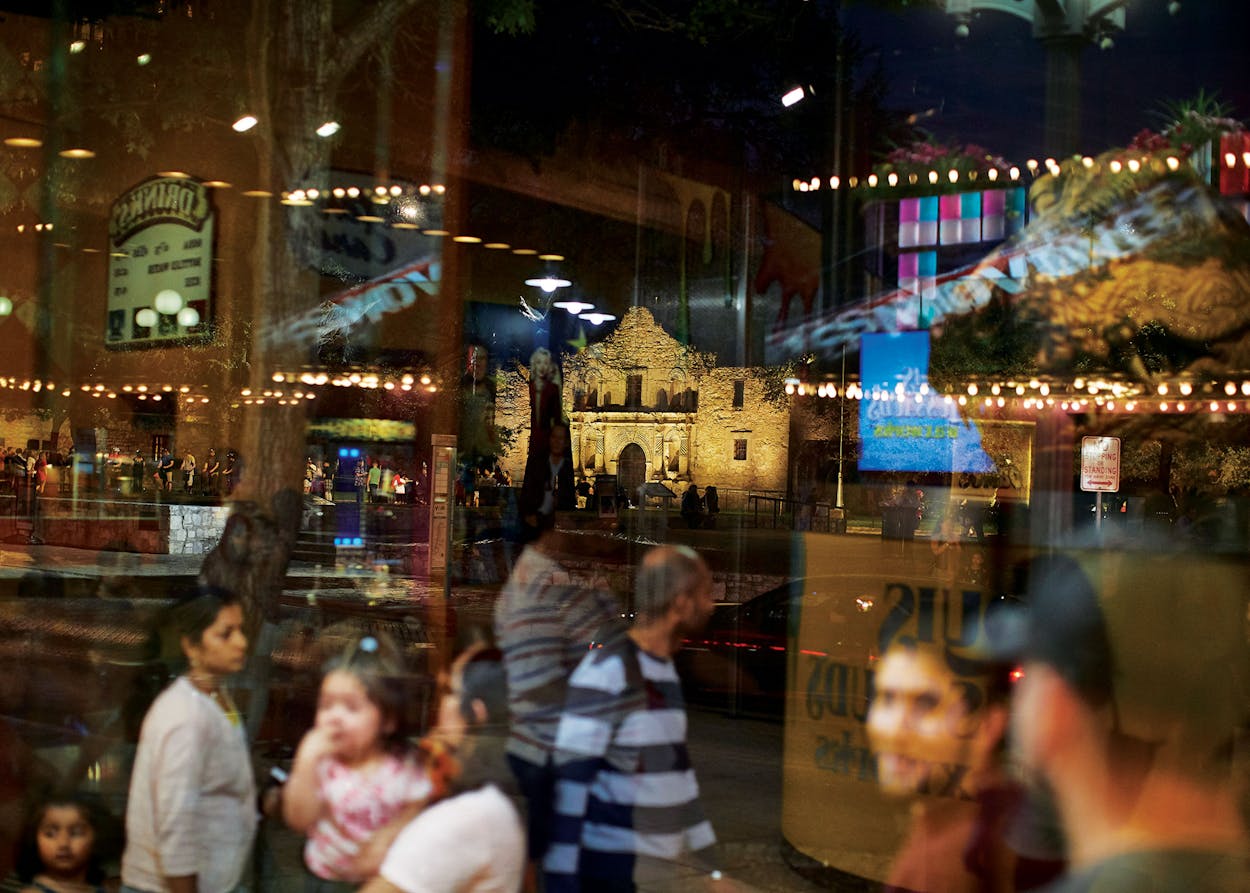San Antonio may have been founded in 1718, but it was a thirteen-day siege in 1836 that gave the city its second name: the Alamo City.
More than 1.5 million people visit the Alamo every year, and far too many leave underwhelmed. There’s a lack of interpretive signage, no visitors center, and no presentation of the larger battlefield and the events that unfolded there. Instead, the Alamo is under siege once again, this time by commerce and schlock. The plaza has all the gravitas of a saloon, with noisy, carnival-like surroundings that include an Odditorium, Haunted Adventure, Guinness World Records Museum, and Tomb Rider 3D, all courtesy of Ripley’s Believe It or Not. All that’s missing is a midway and corny dogs.
How to improve the Alamo visitor experience has been and will continue to be the most debated issue in the city. The Alamo has changed hands several times since the Catholic Church abandoned it at the close of the eighteenth century. The latest surrender came in 2015, when the Daughters of the Republic of Texas were forced, after 110 years, to hand over control of the Shrine of Texas Liberty to land commissioner George P. Bush.
Since then, the Alamo Master Plan Management Committee, which comprises representatives from the General Land Office, the city government, and the nonprofit Alamo Endowment, has been working with various designers, landscape architects, preservationists, and others to revamp the Alamo Plaza. Almost everyone agrees it needs to be done and should have been done decades ago. Agreeing on what should be done is another matter.
The first effort called for enclosing the Alamo’s perimeter in clear glass walls and relocating the boot-shaped Alamo Cenotaph, erected in 1939 to honor the soldiers who died in the battle. That design was defeated by sustained public protest.
A new proposal will be revealed to the public and city council in the coming months. The controversy will undoubtedly continue, given that there is still talk of relocating the Cenotaph and of closing the plaza to most vehicle traffic.
More than the physical landscape is at stake here. Healing old wounds caused by the distortion of history is also a work in progress, with no clear outcome or resolution. Anglos hijacked the real history of the Alamo, erasing Tejanos and vilifying Mexicans (and, by extension, Mexican Americans) in the Disneyfication of its telling. Much has been done over the past twenty years to recover a more complete narrative, but a city obsessed with its own history still insists on telling a myth with too many uncomfortable gaps. That’s why the famous phrase “Remember the Alamo!” carries such different meanings for different people, all of whom live together, yet still apart, in the Alamo City.
More from this collection
San Antonio at 300
From billionaire Kit Goldsbury to artist Ana Fernandez to former NBA All-Star Tim Duncan, seventeen San Antonians reveal why their historic city may be the most interesting place in America right now. Read more.
- More About:
- Style & Design
- Architecture
- San Antonio







